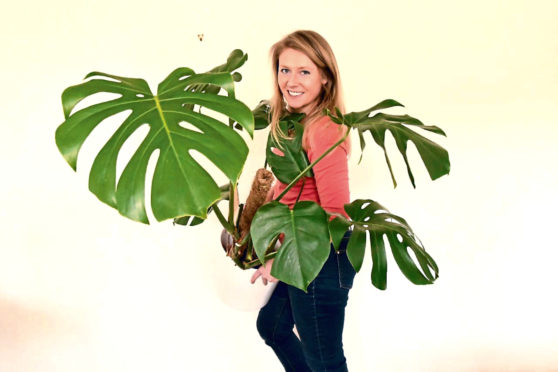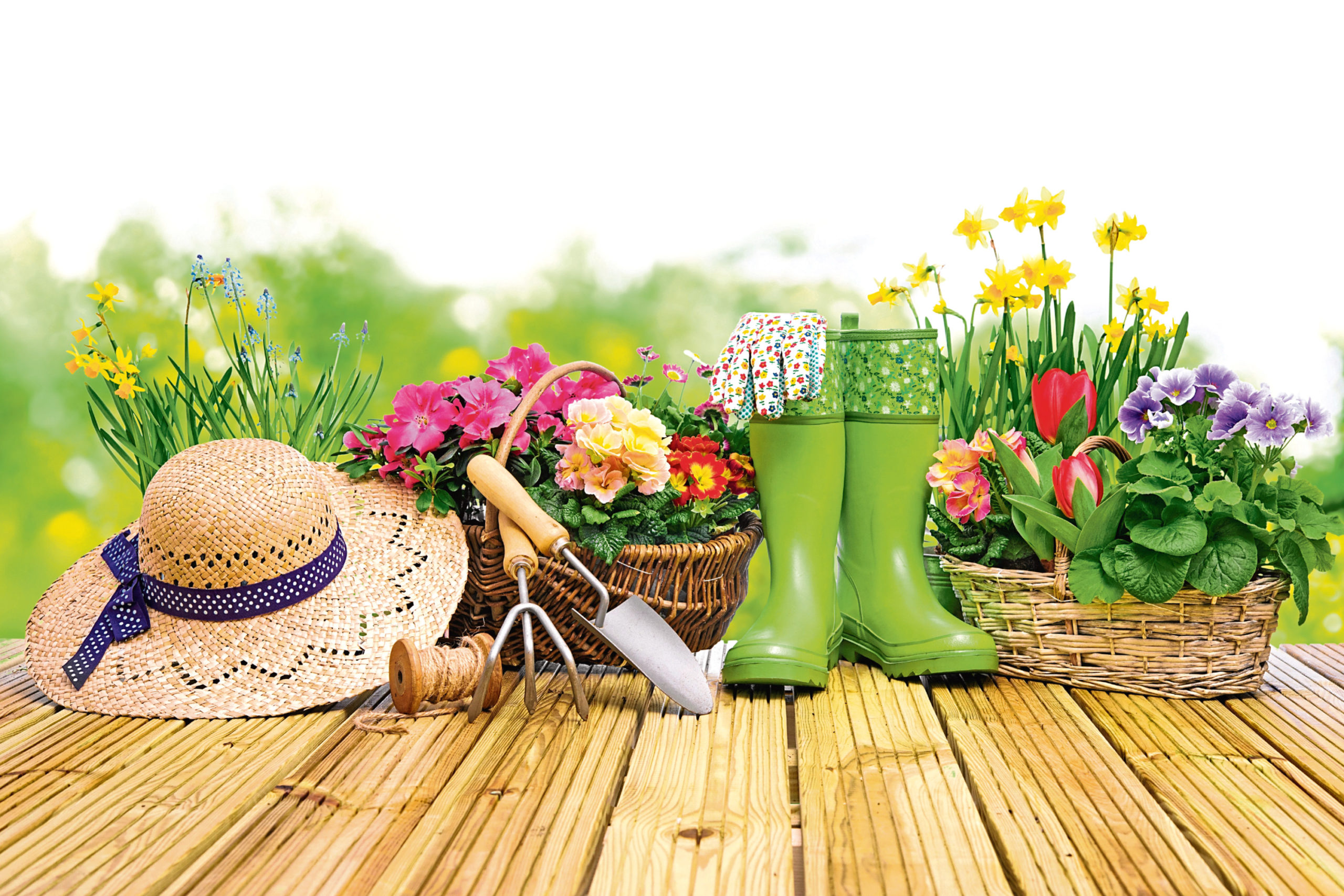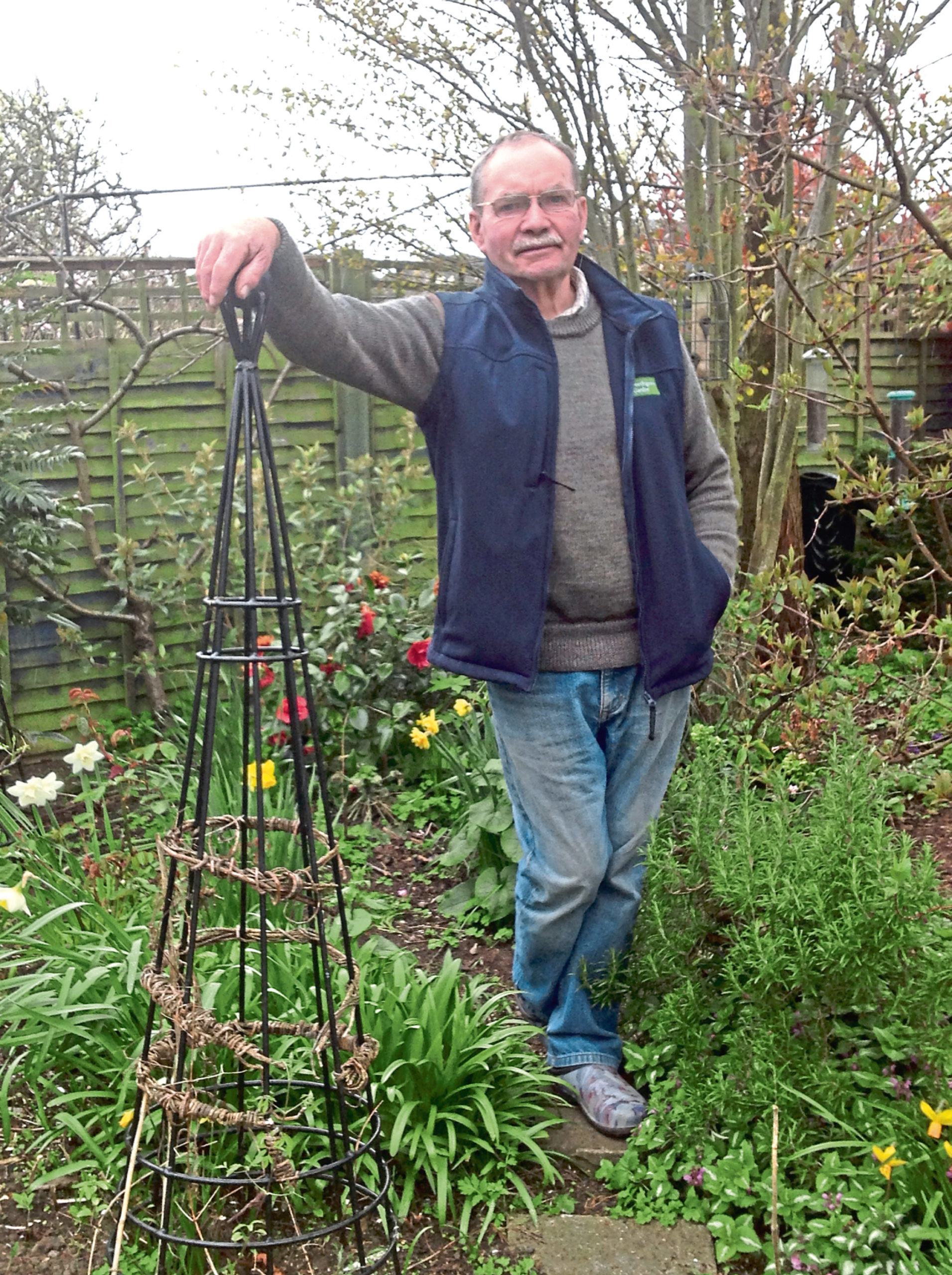
Be it sowing seeds or pulling weeds, gardening can help our mental health positively bloom.
In this difficult and worrying period of the coronavirus lockdown, gardens have become a sanctuary for many, offering a place to occupy minds and provide some time outdoors.
Last week, Oscar winner Dame Helen Mirren told how gardening helped her mental wellbeing. “It’s so calming, worthwhile and a really good way to keep those dark dragons away, which I do have at times,” she said.
So it seems like the ideal moment for Scotland’s long-running gardening series, Beechgrove, to return. But that, too, hasn’t avoided the restrictions brought about by the fight against Covid-19 and therefore the famous Beechgrove garden has been closed.
Instead, the much-loved series, which has been a fixture of BBC schedules since 1978, will be hosted from the personal gardens of each of the four presenters.
While George Anderson, part of the programme since 2005, admits this series will be different to those of the previous 42 years, he believes providing people with some green-fingered tips and pointers is more important than ever before.
“Horticulture has been used for decades as a therapy. Organisations like the Trellis charity focus on that,” said George, speaking from his home in Joppa, Edinburgh.
“If I didn’t have my garden, I would be quite lost. And I know there are lots of people in the same position.
“Getting out and planting, nurturing, watching them grow – it gives you a reason to get up in the morning and, gosh, in these difficult times that’s what we need. To keep going forward and not looking back is so important for our mental health.
“The garden has been a godsend in these times of isolation. Gardening and growing plants, whether in a space outside, on a window sill or balcony, in pots or the open ground, is good for the soul.”
On his daily walk with wife Gill, George has noticed an increased number of very tidy gardens, which he says is indicative of the upward trend of people picking up a trowel.
“Previously, there were an awful lot of people frightened to do anything in the garden in case they got it wrong.
“The average age for people beginning to participate in gardening, taking it seriously, is from the ages of 35-40, when they might have their own house with a garden, and a family, and they maybe want to grow produce to feed their family.
“I think we are being forced into doing that much earlier now and people are responding.”
As far as produce, there is lots we can grow to add to the dinner plate.
“For folk with some space, I’d recommend growing garden peas, which take 60-90 days to produce a crop, plus there is the anticipation of watching them grow. French beans are also good,” said George.
“If you’re involving children, something speedy like lettuce, radishes and little stump-rooted carrots are items to get excited about.Cress, mustard and salad leaves are such a brightener when it comes to meal time.
“In the first episode, I will be growing cress in yoghurt pots. I’ve been sowing one every week, so we can see the different stages of growth.”
With many garden centres now temporarily closed, picking up items for the garden isn’t as easy as it once was.
“I was looking at an online company and there was a three-week delivery wait – the pressure on these companies is enormous,” said the presenter.
“Some of the growers who have been producing spring planting would have expected Easter weekend to bring their biggest sales, but they are now in lockdown. A lot of these plants are just going to waste.”
A number of garden centres have, however, started an online ordering service, which can then be picked up at a specific time and date.
Not everyone is lucky enough to have a garden, though, so the show will also focus on houseplants and what’s achievable indoors and in limited spaces.
“My co-presenter, Kirsty Wilson, will be growing stuff on window sills,” said George.
“We want to have material to suit everyone, not just those who are privileged to have a garden. Whether it’s on a window sill, greenhouse or out in a garden, the principals of gardening remain the same.”
What hasn’t remained the same is how this year’s series of Beechgrove is being put together.
While it is hoped the team can return to the famous garden towards the end of the 26-week run should current restrictions be relaxed, for now, with social distancing in place, George has no crew to rely on when filming in his own garden.
Instead, he has been given a camera to record material, which he will then send to the producers to be edited.
“Previously, I never had to worry about sound, focus, background, continuity or angles, so it shows how much our colleagues were doing for us,” he admitted.
“Gill is quite handy with the camera and so far it’s been quite exciting and good fun.
“I live in a bungalow with a low-maintenance front garden with grass and bulbs, while the back garden has been divided up so that it provides open, sunny aspects, as well as shaded woodland areas.
“This allows me to grow a wide range of plants. The area to the west of the house has a small glasshouse, a veg patch with two small, raised beds and a number of dwarf apple trees.
“I could run out of jobs if I go too fast, and I have to make sure what I do is topical, so this will force me to take my time.
“It’s the same for folk at home thinking of gardening. People are so impatient these days, and will think their seeds should germinate, grow and be harvested within a week, but that’s not how it is. There is no rush, we are not going anywhere for the time being.
“Nature is a wonderful thing and will often heal itself and go on, and that’s something we need to remember.”
Beechgrove, BBC Scotland, Thursday, 7.30pm, repeated Sundays on BBC2
How presenters are branching out to help enthusiasts

The other Beechgrove presenters reveal where they will be broadcasting from as the programme returns.
Kirsty Wilson will be presenting from her flat in Edinburgh.
“My favourite houseplant is Monstera Deliciosa and I also enjoy growing Phalaenopsis orchids at home – both of which are really easy,” she said.
In the second episode, Kirsty will take viewers into the Royal Botanic Gardens in Edinburgh, which are currently closed to the public, where she is herbaceous supervisor.
Brian Cunningham will present from his garden in Scone.
“I’ll be doing an item on composting, reflecting what is happening, as some authorities have had to cut back on recycling waste pick-ups. It is a truly awful time but I always think gardeners are glass-half-full people and I’m hoping this time, weird and scary as it is, will reconnect more people with gardens and their importance.”
Carole Baxter will film from her garden in Aberdeenshire.
“Gardening is extremely therapeutic and I think at this time our connection to the natural world has never felt so precious,” she said. “Obviously not everyone has a garden. Many people are largely confined to their flats, but we are aiming to give inspiration to people across the board.
“A lot of people are asking about edible crops and we will be looking at that across the series, as well as providing hints on what tools they can use from what they have to hand.”
The soil is beginning to warm and weeds will be coming through, so keep a hoe going and if you continue weeding now, you won’t have a problem with them later on.
If something comes out of the ground easily then it might be a plant you wish to keep. If it proves difficult to come out, it’s more likely to be a weed.
Don’t do the same task constantly all day. Alternate – maybe a task stretching up and another bending down, utilising different muscles.
Take time to sit and look, so you can plan and design your garden. Go inside and look out the window and imagine which pictures you wish to create.
Don’t give up if something fails – try again, but remember what you did the first time and maybe try to alter it next time.

Enjoy the convenience of having The Sunday Post delivered as a digital ePaper straight to your smartphone, tablet or computer.
Subscribe for only £5.49 a month and enjoy all the benefits of the printed paper as a digital replica.
Subscribe